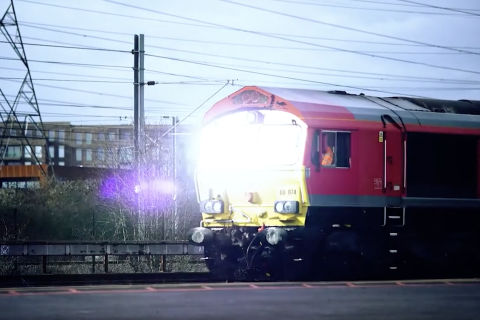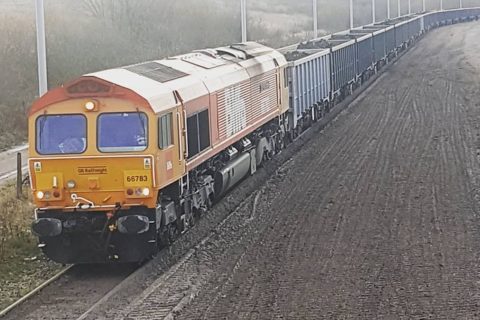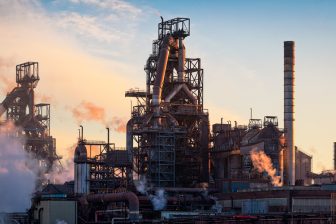
Future of UK Freight is split between opportunity and challenge
AECOM, the global multinational infrastructure consulting firm, active in across the UK logistics and freight, has published its annual Freight Matters review of the sector. The report, compiled by the freight and fleet team at the UK and Ireland offices, recognises the future value of rail freight in the recovery of the UK economy, and as a key driver towards the government-mandated net-zero by 2050 ambition. Such a directive, and a legally binding one at that, may be something of a pipe dream for the Dallas headquartered company, set as it is in the heart of the American oil industry, having not so long ago been located in Los Angeles, where car culture and road transport still has a commanding position in the logistics sector, notwithstanding the queues of intermodal trains that serve the vast Long Beach Los Angeles port complex.
The annual examination of the UK freight logistics sector, complied by a specialist team at AECOM, has highlighted what they admit many of the stakeholders in the sector already know. They say most of those involved are already aware that the freight and logistics industry is experiencing systemic and long-term challenges. The ACEOM team says that those who work in the sector have been alert to the difficulties being faced, and successive governments have often not prioritised its needs. The UK Department for Transport policy document “The Future of Freight a long term plan”, set out to address issues affecting the efficiency and effectiveness of the supply chain. In this annual report, the research authors have identified areas where rail freight has chances to prosper, but also where the sector faces adverse signals.
Call for evidence from the sector
Five elements are identified as the primary challenges, and not surprisingly, there is a self-inflicted wound right at the top of the list. “Brexit, the pandemic, driver shortages, supply chain failures, and decarbonisation have all meant freight has risen quickly up the political agenda”, says the report. “In June 2022 the UK Department for Transport (DfT) released “The Future of Freight a long term plan” to outline the government and sector’s joint response to these challenges. These interventions, whilst arguably long overdue, are a welcome approach to addressing key areas where there have been difficulties, namely around retention of skills, delivering logistics facilities in the right locations, and challenges associated with decarbonisation of the sector.”

That government plan outlines changes required over five key areas, and the AECOM report summarises them as the opportunities for rail freight to engage with the industry at large. The DfT document called for the development of a national freight network to ensure the seamless flow of freight; and the development of a freight energy forum, to assist the transition to net zero carbon in the economy. To help with that, the UK government intends to reach out to industry to gather evidence to explore planning reform. That could be particularly advantageous for the rail freight sector, given that any rail freight development is invariably met with a disproportionate level of resistance, often informed by out-of-date impressions of rail operations.
Capacity improvements across the network
The report says that the sector has to address skill shortages in the sector through fostering a “generation logistics” attitude, an enlightening potential workers in the sector to the career opportunities that exist. The report also notes that the UK government has laid down a Financial incentive, with the creation of a dedicated seven million pound (8.2 million euro) freight innovation fund. Using a number of sources, including the UK Office of Rail and Road, AECOM put analysis behind the figures for all modes of freight logistics. “Railfreight represents a sustainable means of moving freight, with positive impacts on associated carbon emissions, air quality, congestion, road safety and amenity”, says the report authors. “Since 2000 Railfreight has grown significantly in some sectors, with coal movements replaced by growth in containers and aggregates associated with the construction sector.”
2020 continued to see rail freight perform a significant role in the movement of goods in the UK with 75 million tons transported by rail, say the report authors. Although they note that is a decrease of 1.6 per cent on the previous reporting year, Those figures may not reflect rail freight performance, so much as be a bellwether for the wider economy. Overall, the report is optimistic about the growth of rail freight, particularly in the predictable market-leading commodity. “One of the biggest contributors to overall freight volumes was domestic intermodal container movements, comprising 39 per cent of all freight volumes”, says the reporting team, concluding that there is plenty of growth to come and that growth is not too far away. “As proposed rail terminals are developed and capacity improvements are made across the network, it is hoped and anticipated that rail freight role in the movement of goods continues to grow”, they conclude.



